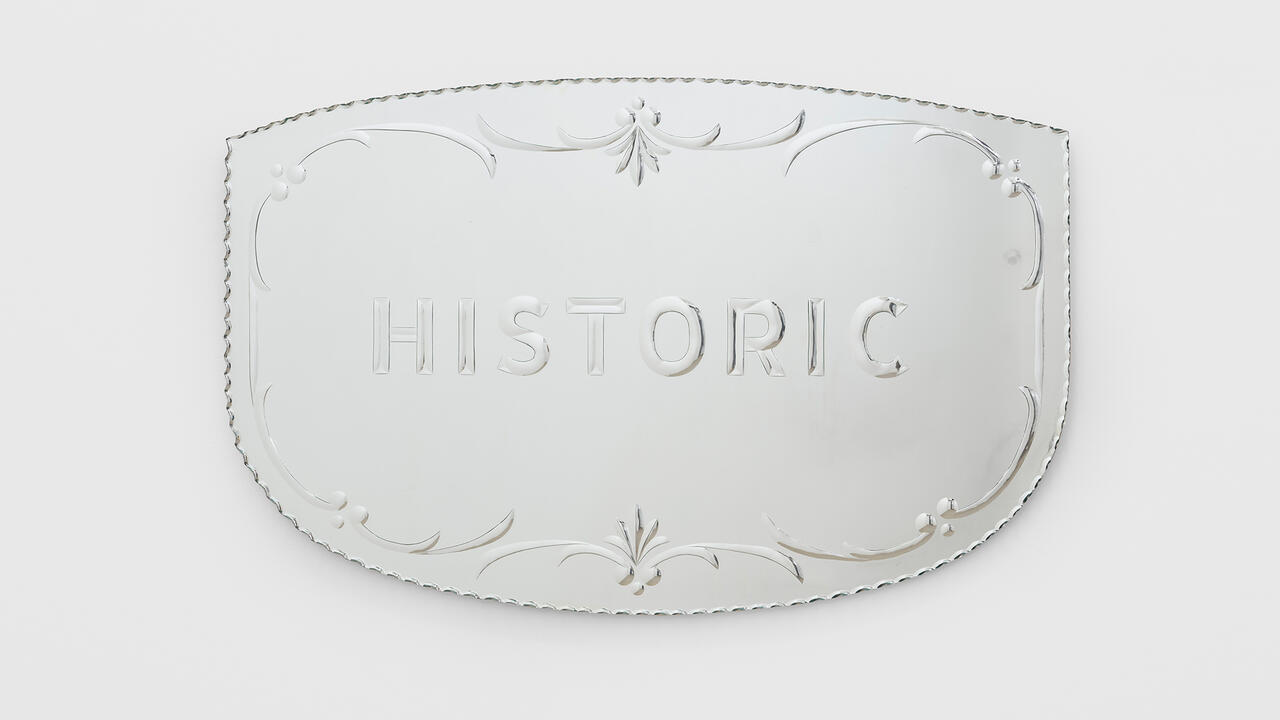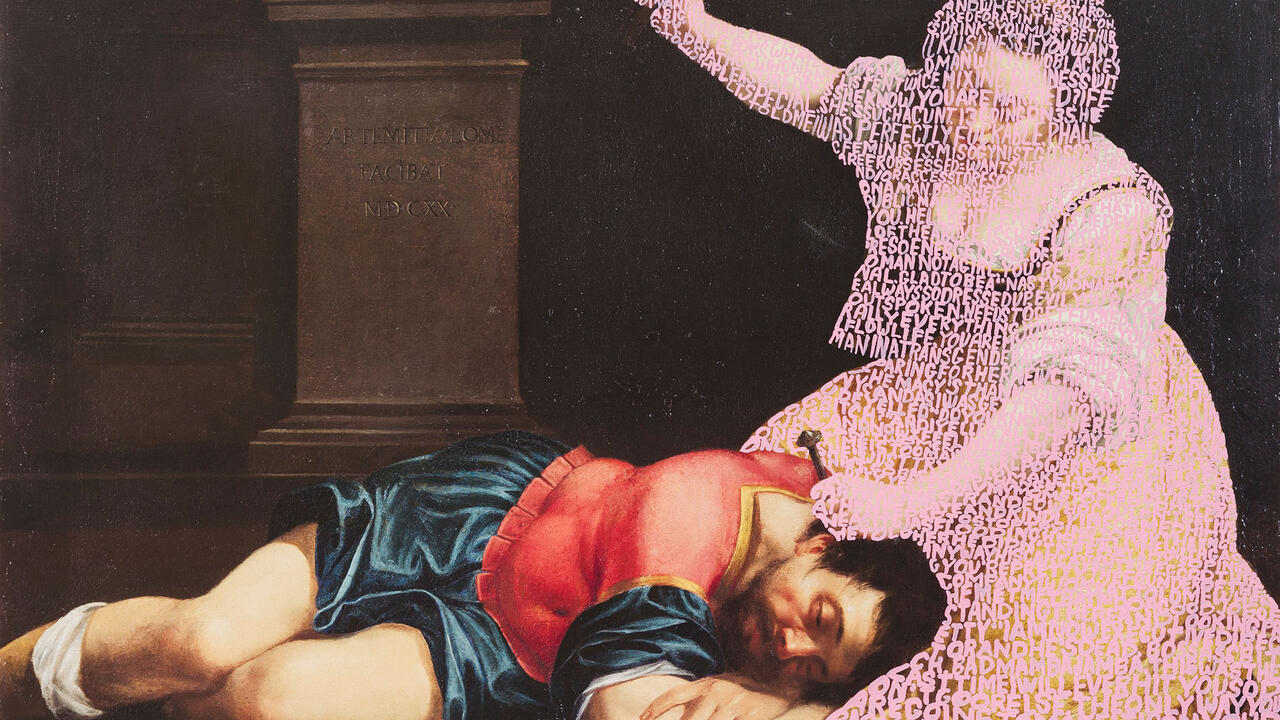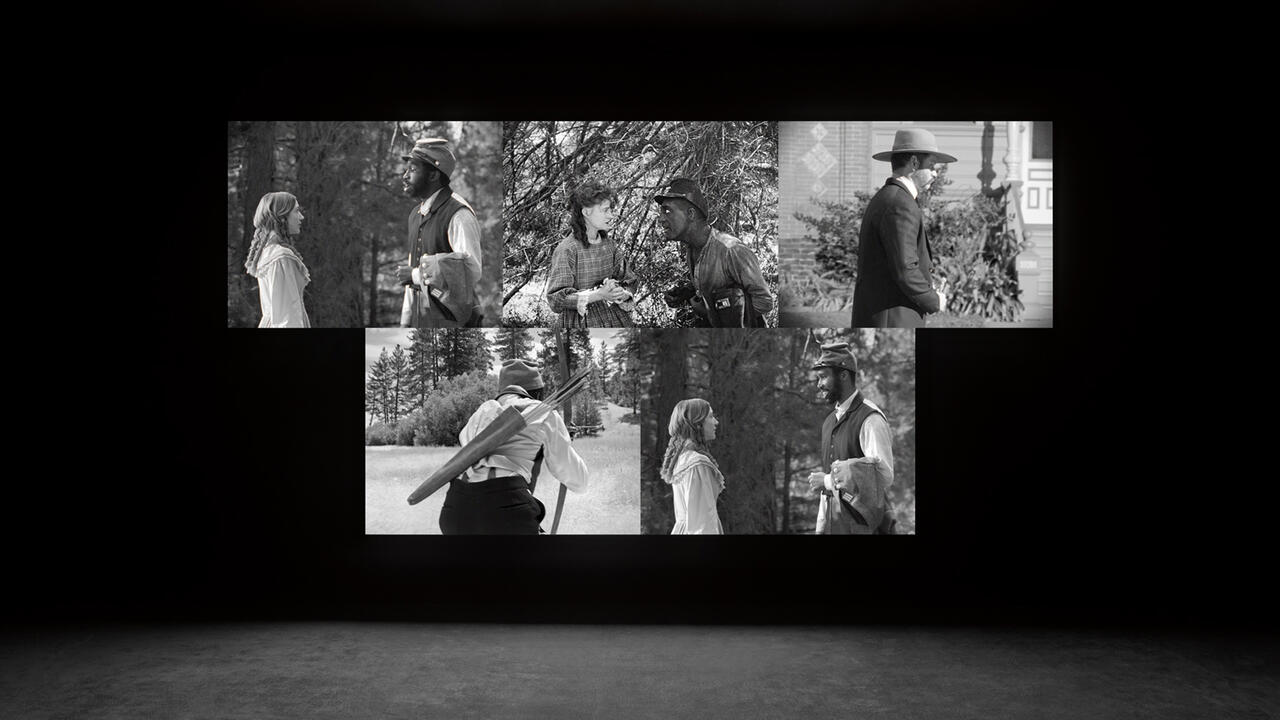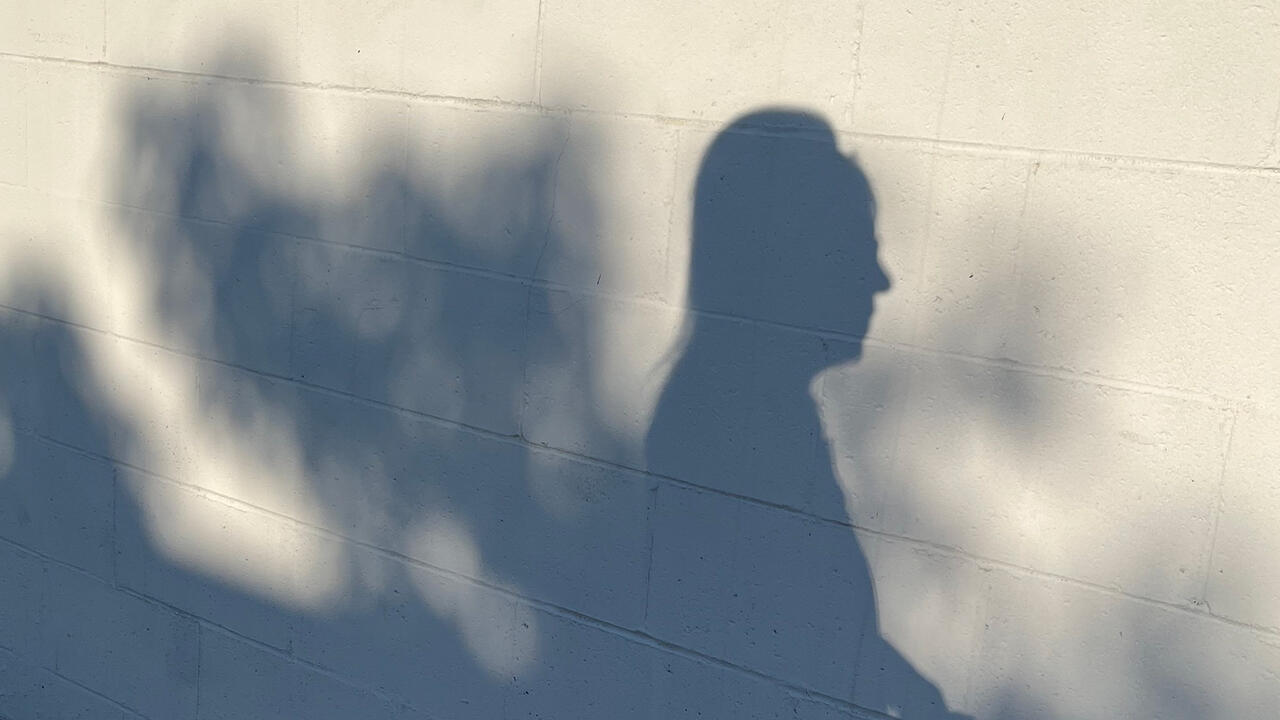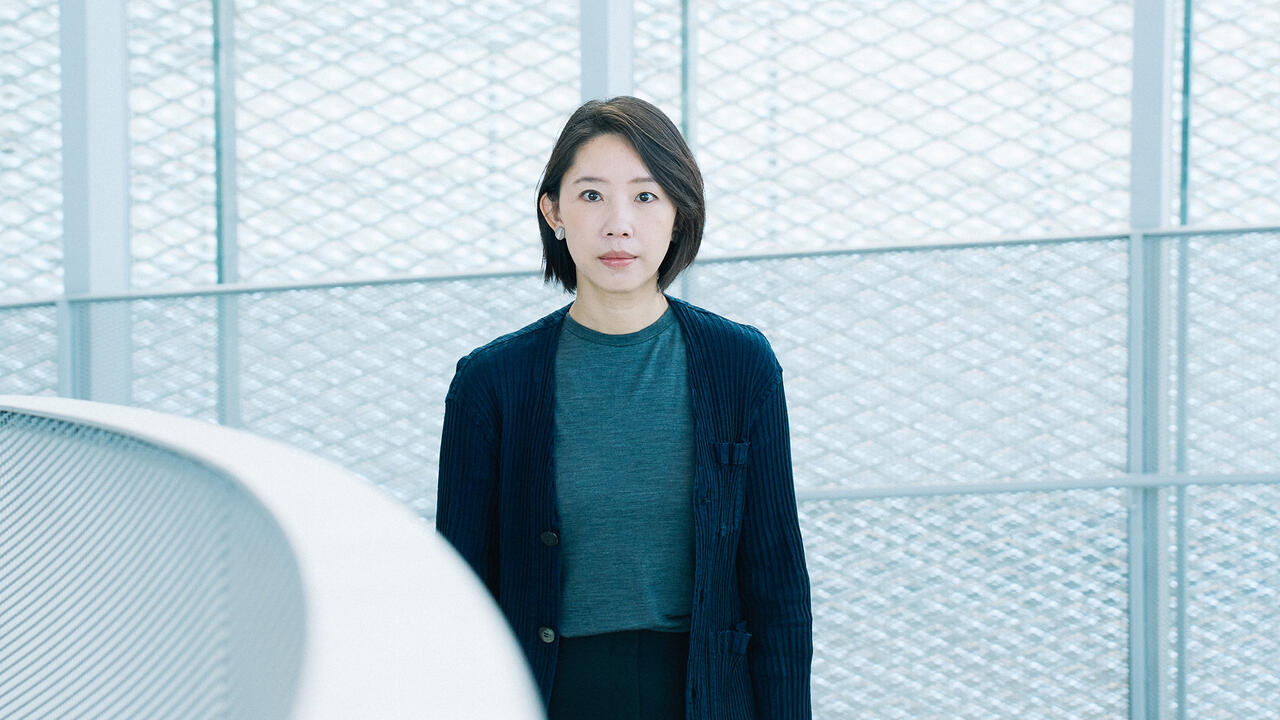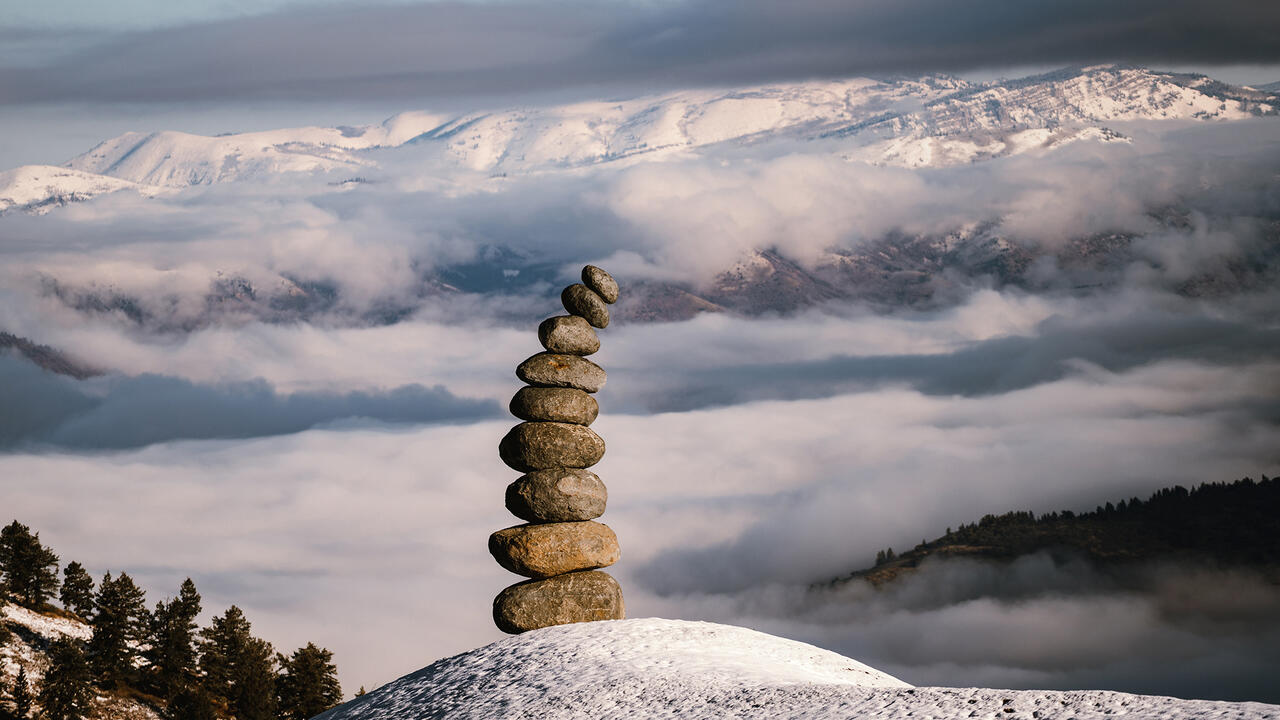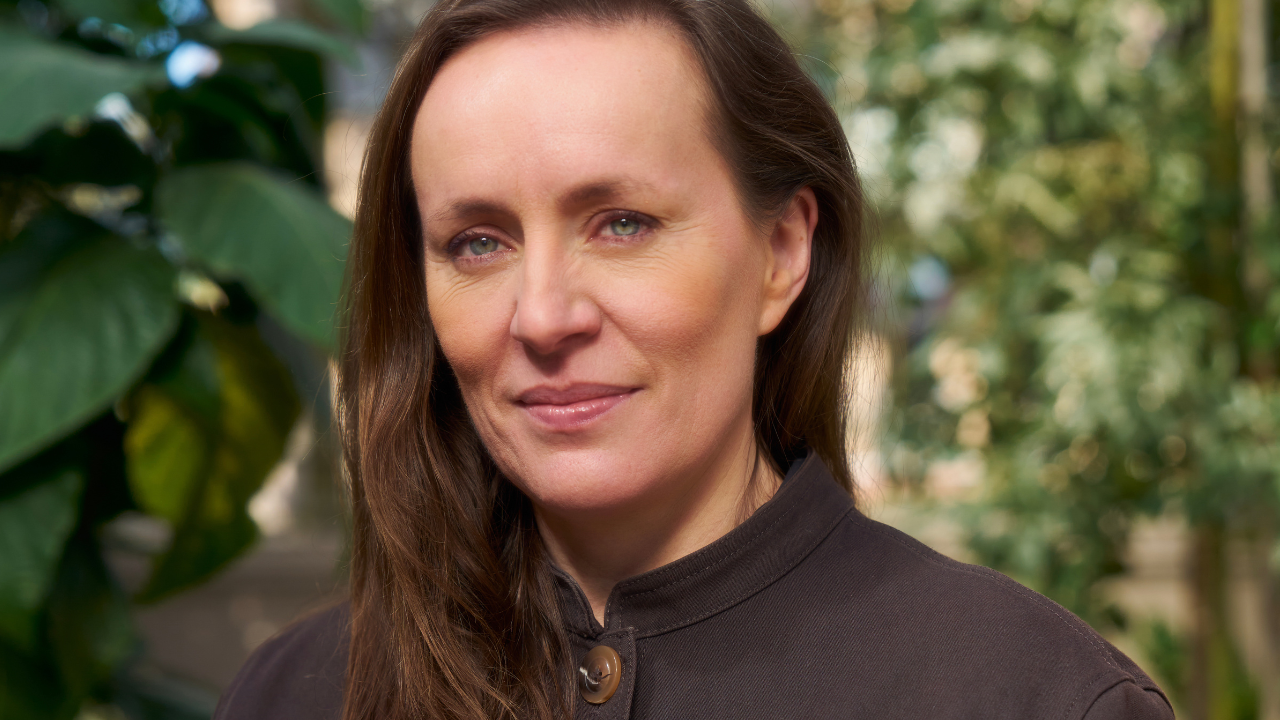Michael Rakowitz: The Invisible Enemy
With his fourth plinth commission unveiled in London, the artist talks archaeological magic tricks and Saddam Hussein’s obsession with Star Wars
With his fourth plinth commission unveiled in London, the artist talks archaeological magic tricks and Saddam Hussein’s obsession with Star Wars

Evan Moffitt The winged Assyrian lamassu you’ve just installed on Trafalgar Square’s fourth plinth is a form you first used in The Invisible Enemy Should Not Exist [2007–ongoing]. Can you tell me about that project? Who is the ‘invisible enemy’ of the title?
Michael Rakowitz The fourth plinth work is an extension of The Invisible Enemy, which – along with drawings and a soundtrack – comprises a life-sized reconstruction of the more than 8,000 artefacts from the Iraq Museum in Baghdad that are missing, stolen, destroyed or of ‘status unknown’, after it was looted in 2003. That list has, unfortunately, grown to include the artefacts and archaeological sites that have been stolen or destroyed in Iraq since then.
The project began when I was at Berlin’s Pergamon Museum in September 2006. I knew the Pergamon Altar was there, but I wasn’t aware they had the Ishtar Gate, too. When I saw the gate, I was completely blown away. I thought about why it was in Berlin, about the terms under which it was taken. The guidebook noted that the gate was the centrepiece of ancient Babylon, built around 575 BCE, and located on a processional way used during new year celebrations called The Invisible Enemy Should Not Exist. It was the coolest street name I’d ever heard. And it was perfect because it spoke to this idea of the ‘phantom threat’: US President George W. Bush’s fabricated existence of weapons of mass destruction and the conflation of the 9/11 attacks with Iraqi President Saddam Hussein.
Babylonians would bring votive statues down this road to the temples. The statues, which often appear in collections of Mesopotamian art, are understood to have been surrogates for the worshippers. Those artefacts, now stolen, represent the dead. I saw how outrage over lost artefacts could become outrage for lost lives.

EM Why did you make your reproduction of the Ishtar Gate at partial scale?
MR The surviving remnants of the original Ishtar Gate were taken in 1899 by the German archaeologist Robert Koldewey and installed at the Pergamon Museum in 1927. Consequently, in the 1950s, the Government of Iraq commissioned a plaster-and-wood reconstruction. That facsimile became one of the most popular photo-ops for US soldiers; if you Googled ‘Ishtar Gate’ in 2007, the first image you saw was this pathetic reproduction with a US soldier in front of it. So, in 2010, when I was invited to show some of the objects from The Invisible Enemy in an exhibition at Berlin’s Haus der Kulturen der Welt, i decided to make a reconstruction of the reconstruction.
EM Just as you created that work for an institution in Berlin, where the stolen Ishtar Gate still resides, your fourth plinth commission is installed not far from the British Museum, where many of the stolen Assyrian lamassus are on permanent view. What are your thoughts about addressing complicity on a structural level?
MR My artistic predecessors have cleared the ground by establishing institutional critique as a form, and there are institutions that are interested in providing space for those critiques. Most curators of Mesopotamian art are forbidden from engaging with the contemporary politics of the region. The British Museum has been thinking about these things for a long time – though the Elgin Marbles aren’t being repatriated anytime soon. I’m very conscious of the context of Trafalgar Square, a place that valorizes Admiral Lord Nelson and the Royal Navy. The fourth plinth was constructed in 1841 for a statue of King William IV; insufficient funds meant it was never completed, however, and the plinth remained empty. In 1849, the British archaeologist Austen Henry Layard uncovered a lamassu from the sands of Iraq. So, while one sculpture ‘disappeared’ at the beginning of that decade, another appeared at the end of it – a kind of archaeological magic trick.
My lamassu has its ass pointed in the direction of the British Museum and it’s facing south-east, towards Nineveh, with its wings raised, hoping to return. When the piece is deinstalled in 2020, I’d like it to be donated either to Nineveh or to the Iraq Museum: that’s the kind of circular ecology I want to achieve.
EM The Middle Eastern food packaging you’ve used in the series raises a number of questions about authenticity and cultural patrimony, especially in terms of migration and diaspora. If you’re living far away from home, sometimes the most ‘real’ fragments of your culture might be the foodstuffs you buy at a local market.
MR Right. That was something I first explored in Return [2004–ongoing], a project for which I imported Iraqi dates to the US for the first time in over 40 years. In 2004, I had gone to Sahadi Importing Co. in Brooklyn to buy date syrup, because my mother used to lament that the only date syrup you could buy in the US was from Israel, and they had a tendency to over-filter it to the point where it lost its grit. My grandfather used to make date syrup himself, the Iraqi way: thick and unctuous. I picked up a beautiful red can that was labelled ‘Product of Lebanon’, but the shop’s owner, Charlie Sahadi, told me it was from Baghdad. He explained that the date syrup was made in the Iraqi capital, put into large plastic vats, brought over the border to Syria and canned, then driven to Lebanon where it was labelled and sold to the rest of the world. That was how Iraqi producers had circumvented sanctions between 1990 and 2003.
This was in 2004, not long after Bush had declared ‘Mission Accomplished’ in Iraq, yet anything with a bill of Iraqi origin was still subject to intense scans, for which the importer would be charged. Sahadi said it would be bad business, but I thought it would be good art. I set up shop on Atlantic Avenue in Brooklyn, in the heart of New York’s Arab community and, while we were waiting for the Iraqi dates, I stocked it with date products purportedly from other countries, like Lebanon or Sweden. Their beautiful packaging concealed where the items came from, as if the products themselves were terrified of being discovered on enemy territory. When I began reconstructing artefacts, I had no desire to replicate them with their original materials; I wanted to capture their physical aura, but to declare them spectral presences, using discarded materials to invoke their loss. So, I began to use packaging, that material of marginality.

EM The circulation of date products or smuggled antiquities mirrors the migration narratives from Iraq and other war-torn countries in the Middle East. In piecing those narratives together with lost objects, you’re sifting through all kinds of historical fragments – antiquities but also texts and documentation. In your project for documenta 13, What Dust Will Rise? [2012], you assembled disparate, cataclysmic objects: shards of the Bamiyan Buddhas, atomic minerals from the Manhattan Project, a brick from Pruitt-Igoe, granite from the World Trade Center. How did you make those selections?
MR The Taliban’s destruction of the Bamiyan Buddhas in 2001 was a particularly cataclysmic moment for me. As a teenager, I was an apprentice stone carver, and my first work was a tribute to the Buddhas. I researched how the Hazara people in Bamiyan adored those colossi and wanted to rebuild them, but UNESCO and the International Council on Monuments and Sites refused. So, I travelled to Bamiyan with an Afghan stone carver named Abbas al-Adad and we offered the locals a week-long, stone-carving workshop. I thought that if we re-introduced the techniques, locals could do whatever they wanted, without relying on Western institutions.
The Fridericianum in Kassel, where What Dust Will Rise? was shown, had been an important library but twice had its collections destroyed during the Nazi occupation of Germany: first in 1933, during a Nazi book burning, and again in 1941, when the building was bombed. The chief archivist showed me partially burned parchments that looked like human skin. One of the reasons so much ancient Mesopotamian writing survives is that cuneiform tablets were made of clay, so fires just baked them like a kiln. One fire preserves, another destroys.
EM Often, in your work, a historical fragment isn’t just a physical object but a form of arcane information. Some of my favourite pieces from your show at the Museum of Contemporary Art Chicago – The Breakup [2010], for instance, or The Worst Condition Is to Pass Under a Sword Which Is Not One’s Own [2010] – mine obscure histories in unusual ways.
MR I grew up with an obsessive thirst for information. My father is a huge baseball fan so, as kids, we collected baseball cards and memorabilia. When John Lennon was killed, I began to collect The Beatles’ albums, including bootlegs like the Let It Be sessions [1970]. I became obsessed with finding the moment, in those recordings, when the band started to fall apart. In 2009, I was invited to do a project in Jerusalem, and decided to use the break-up of The Beatles to indirectly narrate the city’s history: how enlightenment had given way to collapse and division into four separate quarters. A radio station in Ramallah invited me to do a programme, since radio waves are one of the only things that can travel over the wall, and the chief producer there told me that Sgt. Pepper’s Lonely Hearts Club Band [1967] had been released just days before the Six-Day Arab-Israeli War and had become a kind of soundtrack for her family: those triumphant guitar chords at the beginning signalled Egyptian President Gamal Abdel Nasser’s arrival to liberate the Palestinians; the crashing piano at the end intoned his failure.
The Worst Condition began in 2007, when I saw that a soldier from the 101st Airborne Division based in Mosul had listed an ‘Iraqi fedayeen Saddam Darth Vader helmet’ on eBay; I’m registered to receive site alerts for anything Iraq-related. He had found a cache of helmets and Iraqis told him that Saddam had been a huge fan of the Star Wars films [1977–ongoing]. On the eve of the first Gulf War, Saddam had the Iraqi army march underneath his victory arch in Baghdad to the film’s theme song, over and over again. The helmet led me to investigate not only Saddam himself, but the designers of his weapons, monuments and uniforms, in an attempt to understand the way Hollywood fantasies can fuel the military-industrial complex.

EM Presumably, Saddam was collecting Star Wars memorabilia around the same time that US President Ronald Reagan was launching his own Strategic Defense Initiative – known as the ‘Star Wars’ campaign – in 1983.
MR Exactly. Gerald Bull, who was one of the architects of that campaign, went on to design a supergun for Saddam based on the first-edition cover illustration of Jules Verne’s From the Earth to the Moon [1865], featuring a ridiculously big cannon capable of shooting things into space.
EM Do you seek to destabilize cultural and geographical distinctions in your work as a means of eroding notions of the ‘enemy’?
MR When I imagine Saddam Hussein’s son, Uday, re-enacting scenes from Star Wars in the same way I did in my backyard as a kid, it chafes at ideas of good and evil; that kind of pathos is important. in my work Enemy Kitchen [2003–ongoing], refugees and US Marines skewer meat from a food truck to make kebabs in a kind of collaborative performance. Hands that once held weapons in Iraq are now creating nourishment. After all, ‘hospitality’ and ‘hostility’ share the same root word.
paraSITE [1998–ongoing] came from a similar interest in hospitality, and in recognizing the other as a potential friend. The project was inspired by the detritus used by Palestinian refugees to reconstruct homes that the Israelis had bulldozed, as well as my observation, on a residency in Jordan, that the Bedouin change the form of their tents every night in response to the desert’s wind patterns. When I returned to the US, I saw a homeless person sleeping underneath a building vent, using the heating system to stay warm. So, I designed custom inflatable shelters for homeless people in New York and Boston that could link up to those vents – harnessing the power of the wind, so to speak. The project addressed topics of exile and exodus that my own family and many others had experienced, but also a very local problem.

EM One could consider Enemy kitchen and paraSiTE to be works of social practice. Do you see it as your responsibility as an artist to address issues of social and material need?
MR Art should demand the right to be dangerous, weird and impolite; I don’t think artists have a responsibility except to stay true to that impetus. I want to create open systems in which the work can unfold on its own.
EM Many of your projects are ongoing; is that what you mean by ‘open systems’? Can they ever have an end and, if so, what would that be? The end of looting or of homelessness?
MR Personally, I feel committed to the notion that a project shouldn’t disappear until the problem it addresses disappears. I still do paraSiTE every winter because there are so many people in need of shelter. Dealing with homelessness helps me understand all my projects, to the extent that it reverberates with broader issues of unbelonging and displacement.
Michael Rakowitz is an artist based in Chicago, USA. In 2017, he had a solo show at the Museum of Contemporary Art, Chicago. His commission for the fourth plinth, London, UK, was unveiled on 28 March and his work will be included in the FRONT Triennial, Cleveland, USA, opening in June 2018.
This article appears in the issue 194 April 2018 print edition, with the title Enemy Territory.
Main image: ‘The worst condition Is to Pass Under a Sword which is Not One’s Own’, 2010, exhibition view, Tate Modern, London. Courtesy: the artist; photograph: Tate photography











